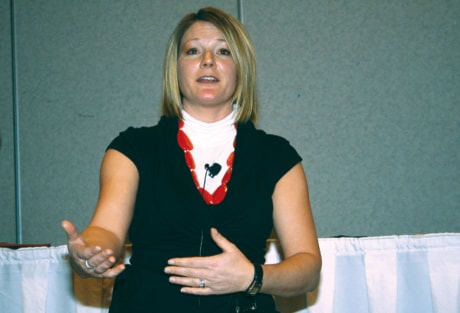The market is still in its infancy, but carbon offset trading is increasing, says an environmental program specialist with Alberta Agriculture and Rural Development. And there are growing opportunities for farmers to participate, added Kerrianne Koehler-Munro.
Speaking on Thursday at the Capturing Feed Grain & Forage Opportunities conference in Red Deer, Koehler-Munro described how the World Bank estimated the value of the global carbon market in 2008 at US $126 billion — double the figure for the previous year.
In Alberta, large emitters of greenhouse gases, like power plants, are now required to reduce such outputs. If they don’t meet specified targets, they must obtain “emission performance credits” from others that exceed their required reductions, pay $15 per excess tonne of greenhouse gases into a climate change and emissions management fund, or buy emission reduction offsets from other entities.
In 2007, noted Koehler-Munro, six facilities bought offsets. Last year, the number of buyers grew to 25.
“So the demand is going up.”
Among the sellers have been agricultural operations, she said. In fact, these accounted for 21 per cent of the Alberta offsets sold in 2007 and 35 per cent in 2008.
Although there are currently 10 approved “protocols” under which agricultural operations might claim carbon offsets, only one — tillage management — has been used to date, said Koehler-Munro. The others include the addition of edible oils into cattle feed to reduce methane emissions, shortening the life cycle of beef cattle or the period of time they are fed in feedlots, converting agricultural waste into biogas by a process of anaerobic digestion, improving the energy efficiency of livestock facilities like pork or dairy barns, and altering pig manure storage and disposal practices to reduce harmful emissions.
Additional agricultural protocols are currently being reviewed or considered, she said.
Although there are about a half-dozen greenhouse gases, Koehler-Munro said only three relate to agriculture: carbon dioxide, methane and nitrous oxide. Each is measured in terms of their carbon dioxide equivalency, with methane deemed to be 21 times more detrimental to the environment than carbon dioxide, and nitrous oxide considered 310 times more harmful.
Producers can claim for carbon offsets created since 2002, with the process requiring an aggregator — who accumulates, registers and sells the offsets — and a verifier, who performs an audit.
“It’s building,” said Koehler-Munro of the carbon offset market.
Prices are currently limited by the fact heavy emitters have the option of paying $15 per excess tonne into the Climate Change and Emissions Management Fund. But she believes this price ceiling will change.
“The carbon will not be going down in price.”
Not only do producers who generate carbon offsets have the opportunity to sell these, the associated new management practices could result in reduced energy and input costs, noted Koehler-Munro.
Additional information about carbon offset trading can be found online at www.carbonoffsetsolutions.ca.
hrichards@www.reddeeradvocate.com
